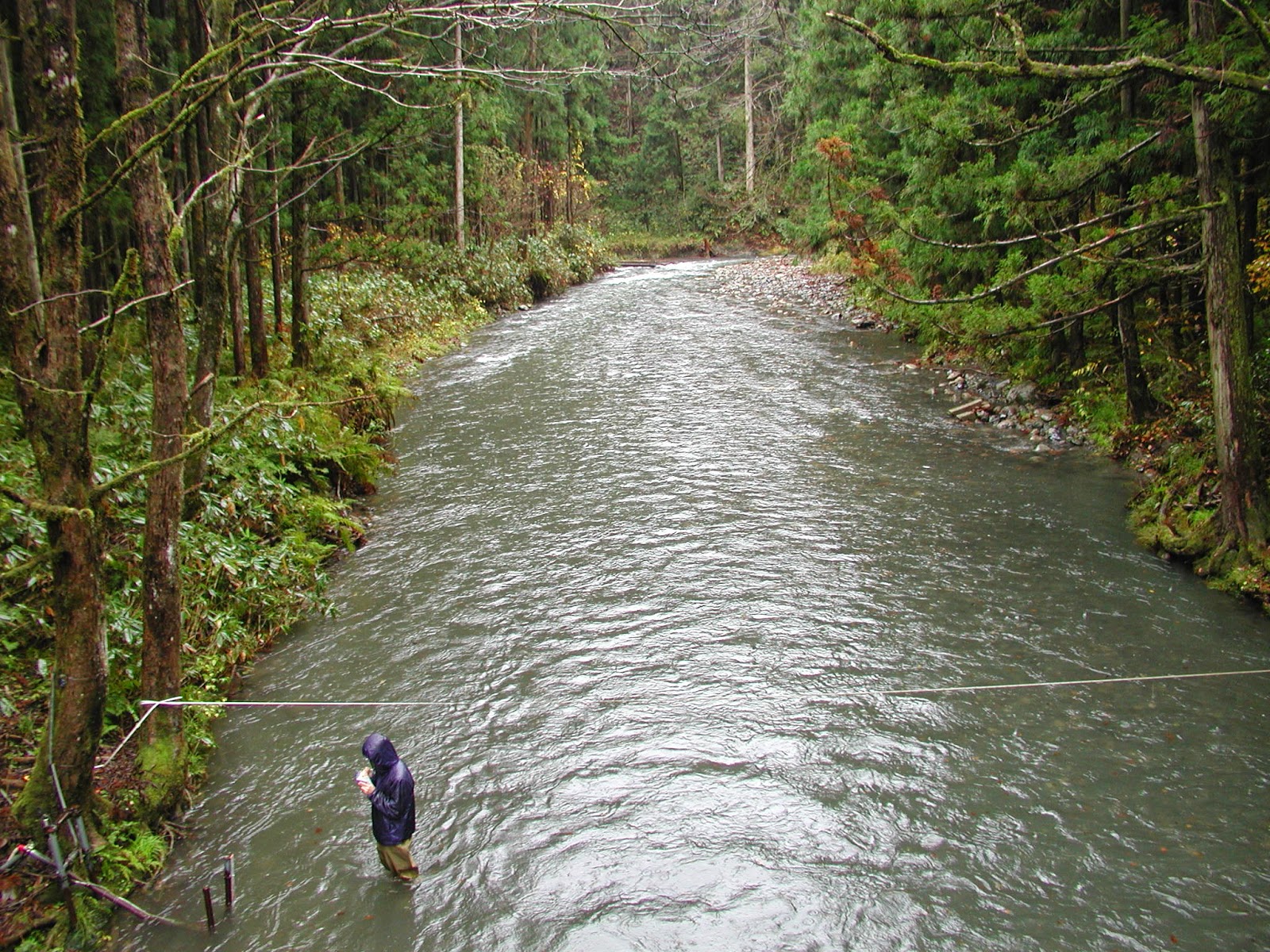 |
| Stage = 0.6m, Q = 3.37m3/s, marginal bedload movement visible |
During today's discharge measurement, peak flow velocities reached about 0.9m/s, and the abundant supply of loose fine gravel on the stream bed was clearly moving in small jumps and bursts. We can assume flow conditions were close to the threshold of motion for bedload sediment. However, suspended sediment levels were low enough that the stream bed could be seen clearly.
We are now into the season of autumn rains where the frequency of rainy days increases, temperatures are dropping, and the soil water and groundwater storage levels are on the rise. This leads to a rise in the baseflow level of the river in between the peaks on the hydrograph. Not until we move into January and rainfall changes to mostly snowfall will the baseflow level begin to fall significantly.




















